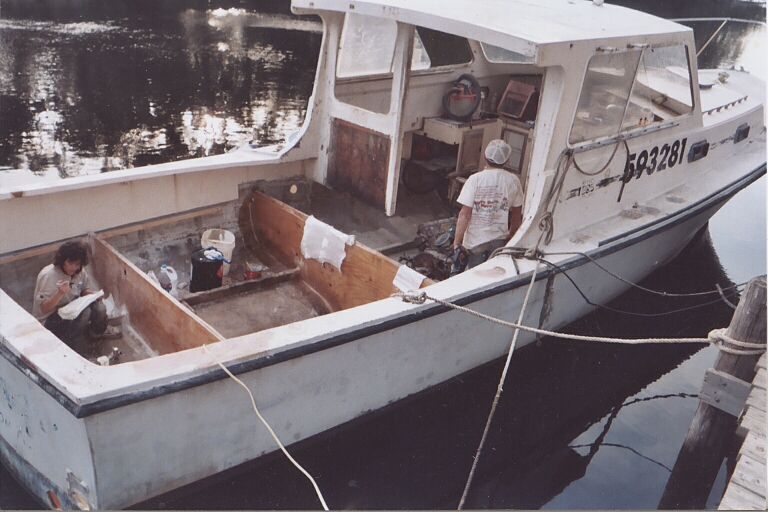
Fiberglass boats that go offshore in the Captain’s eye’s should have at least four water tight Bulkheads.
A collision bulkhead forward in the bow section. This compartment is used as a anchor rope storage compartment. If the boat is engaged in a head-on collision and the collision bulkhead doesn’t fail you are still afloat! A bulkhead forward of the main engine and bulkhead aft of the main make up for the engine compartment. Stuffing boxes for shafts through hull fittings below the water line are contained here. Hopefully, if they leak or the fiberglass boat hull gets breached below the water line, the water will be contained in the engine room. The bulkhead acts as a sound, heat and fire barrier as well.
Aft to the stern, another bulkhead makes up the Lazarette where the rudders are. Dropping a rudder offshore is a traumatic experience even for a well seasoned old salt! Bottom line survivability, matey. Pay attention to your fiberglass boat bulkhead!
Boat Bulkheads are constantly under attack. As the fiberglass boat hull runs through a sea, flexing and vibration occur stressing the bulkhead. Moisture in the bilge add to the problem. Heat from main engines, generators and vibration add to the stress. Bulkheads are structural members of the fiberglass boat hull adding the transverse strength to the boat hull and reducing flexing.
Prior to the late ninety’s most fiberglass boat builders used marine plywood for bulkheads. It was laminated to the fiberglass boat hull with polyester resin and fiberglass mat and fiberglass woven roving 24 oz. This process is known as taping-in or tabbing. Done correctly, the eight to twelve inch strips of fiberglass mat and fiberglass woven roving are wetted out with polyester resin laminated to the fiberglass boat hull and to the marine plywood bulkhead, making a strong connection. Over time and use it’s not uncommon to find the fiberglass de-laminate away from the plywood bulkhead or the plywood degrading. A close inspection will tell the tale. The 1977 thirty five foot solid fiberglass Bruno/Stillman Sport Fishermen came to Captain Levi for bulkhead replacement in 2003. Twenty Five years of time and offshore waters broke two of her bulkheads lose. The integrity of the marine plywood was gone.
